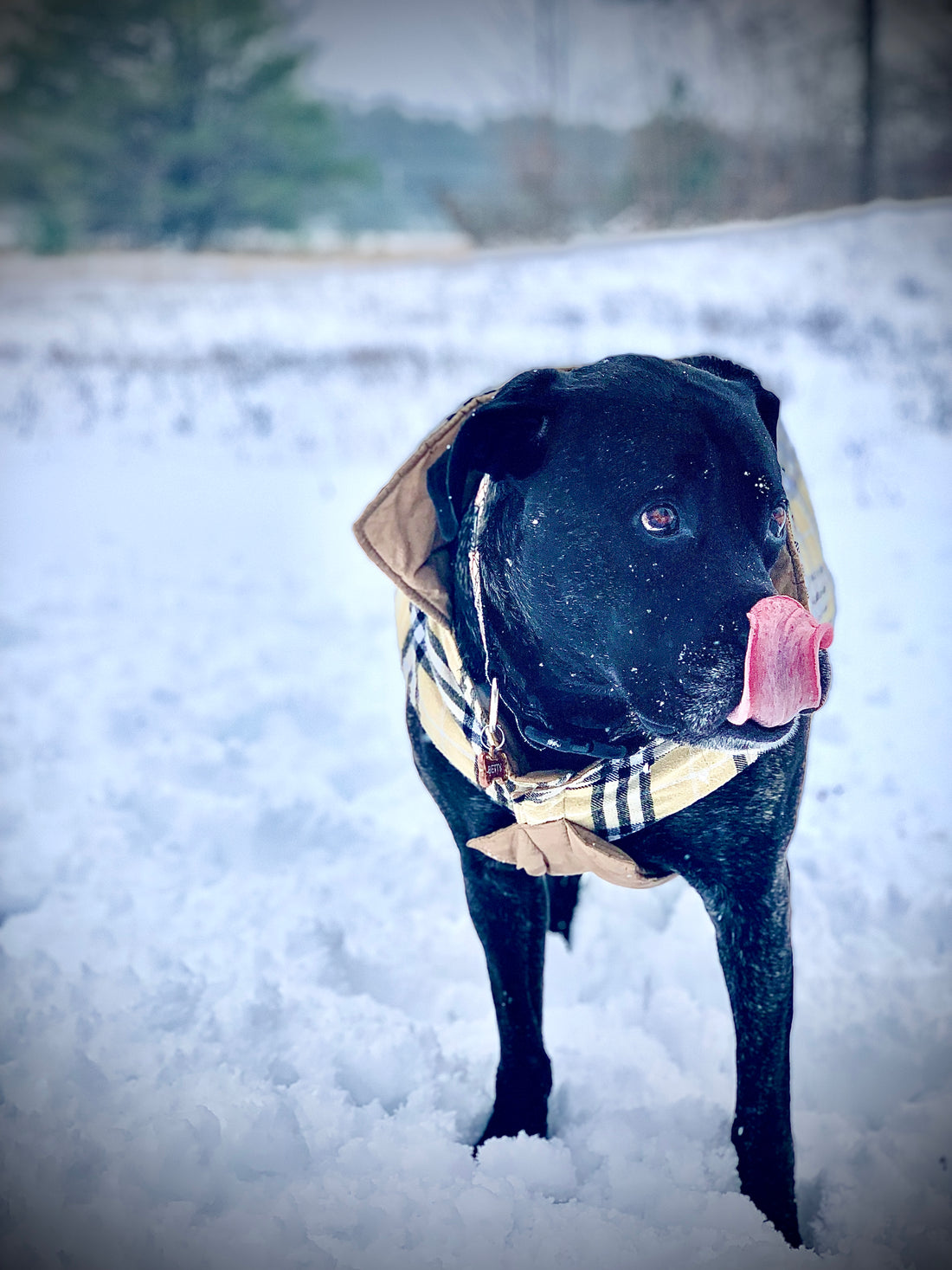Hey y'all, I hope you are all doing well and had a great Thanksgiving holiday. I know I sure did, my mom and dad took me and my sister, Josephine, for plenty of walks outside since there wasn't much snow on the ground.
That, however, changed pretty drastically as I went outside this morning to about four or five inches of fresh white snow on the front porch. I love the snow! It's fun to run in, push around with my nose and catch snowballs my mom and dad throw for me.
As the snow appears like it's going to be sticking around for a little while, it's important for you 'hoomans' to understand that yes, just like you, us doggies are affected by the cold, ice and snow too.
With that in mind, here's some simple tips from the American Kennel Club you can take to make sure your dog stays warm, happy and safe throughout the winter months.
• Limit a dog's time outside
It's true, dogs can suffer from frostbite, especially on delicate earflaps and tail tips. In extreme cold, it's a good idea to keep dogs inside, with the exceptions of the heavy-coated northern breeds that survive in low temperatures. Also, be cognizant of major signs of frostbite which includes skin that appears to be white or blue.
• Stay indoors when possible
Even a big furry dog that lives indoors will need some time to acclimate to freezing temperatures. Short play romps outside will help your dog's body get used to the change in the weather. Keep indoor activities fun with new indoor games. There are also dozens of indoor interactive dog games to give your dog a fun way to get both mental and physical exercise.
• Bundle your dog up
While most dogs all have their own coat, you surely wouldn't want to go out in a blizzard in a light spring jacket yourself, right? Make sure small, delicate, and short-haired dogs, even large ones like Greyhounds, have an appropriate winter wardrobe, including a sturdy winter coat and a fitter sweater.
• Consider your dog's age
Where climate is concerned, age is more than a number. Like humans, very young and very old dogs have a hard time regulating body temperature, so they have more extreme reactions to changes in weather. Romps in the now may be too much for their more delicate makeup. Keep older dogs and puppies indoors as much as possible.
• Protect your dog's paws
If you've ever looked at Iditarod sleg-dog teams, you'll notice that their paws are covered by booties. Mushers know that the race may be lost because of injuries and abrasions from running on ice. Even if your dog isn't running through 1,000 miles of frozen Alaskan wilderness, winter conditions like we have here in Michigan can still do damage. Different retailers offer dog boots or paw protectors that work well to keep your pup's feet safe.
• Invest in a heated dog bed
Yes, heated dog beds are safe! A heated dog bed can be a great option for dogs that tend to get chilly, including senior dogs. Look for one made specifically for dogs that also has an auto-shutoff.
• Trim foot fuzz
Hair on the feet of long-haired dogs can form ice balls between-pads and toes. Keep them well-trimmed, cutting the hair so that it is even with the surface of the foot.
• Clean your dog's feet
City streets are coated with deicing substances, such as sodium chloride (rock salt) and calcium chloride, which make sidewalks safe for pedestrians, but can damage paw pads. Make sure you wash off your dog's feet. Some people keep a bucket next to the door to rinse their dog's feet as soon as they come in from the cold. Use warm water and make sure to reach spots between the toes and pads. Some dogs will also need a paw balm or moisturizer for dry skin.
Other winter safety tips:
• Avoid thin ice
Too often too many dogs have to be rescued from icy waters. While it may look like fun to slide across that frozen pond, ice can easily crack, and dogs — and 'hoomans' — could fall in. Also, slipping on ice can lead to muscle strains and other injuries.
• Beware of antifreeze
As little as a teaspoon of antifreeze can cause kidney failure. Be alert to the signs that your dog has swallowed some of it, which include drooling, vomiting, seizures, excessive thirst, panting, lethargy, and a drunken appearance. If you think your dog has ingested antifreeze, it’s important to get to a vet as soon as possible. Even if you keep your antifreeze safely tucked away, there is still a danger from residue in the streets. Most antifreeze is green ethylene glycol, but it comes in several different colors. So watch where your dog is sniffing.
If you are looking to grab any of these goodies mentioned above to help keep your furry best friend safe this winter, you can find many of these items at these wonderful small businesses (check online or in person).
Ruff Life Pet Outfitters, Petoskey, MI - http://www.rufflifepet.com/
Pet Pantry, Harbor Springs, MI - https://www.petpantryharborsprings.com/
Bearcub Outfitters, Petoskey, MI - https://bearcuboutfitters.com/
Joey's Pet Outfitters, Williamston, MI - https://joeyspetoutfitters.com/
Stay safe, friends!
Love,
Betty

